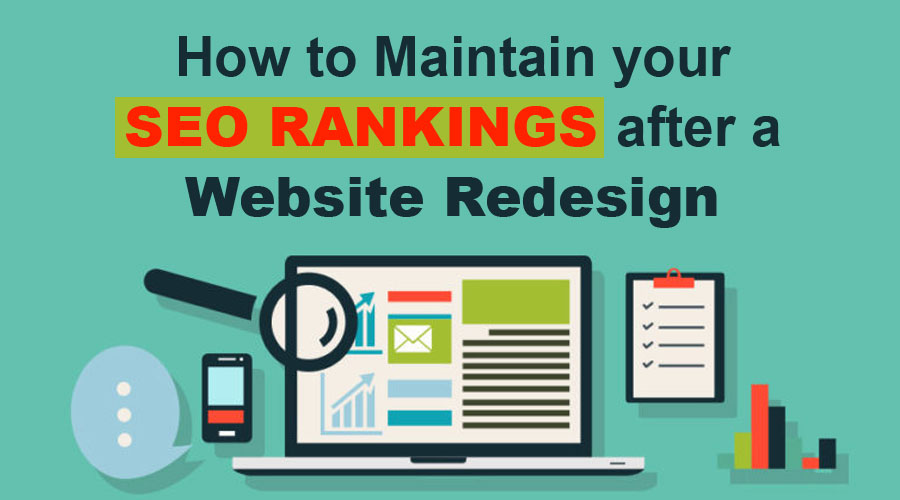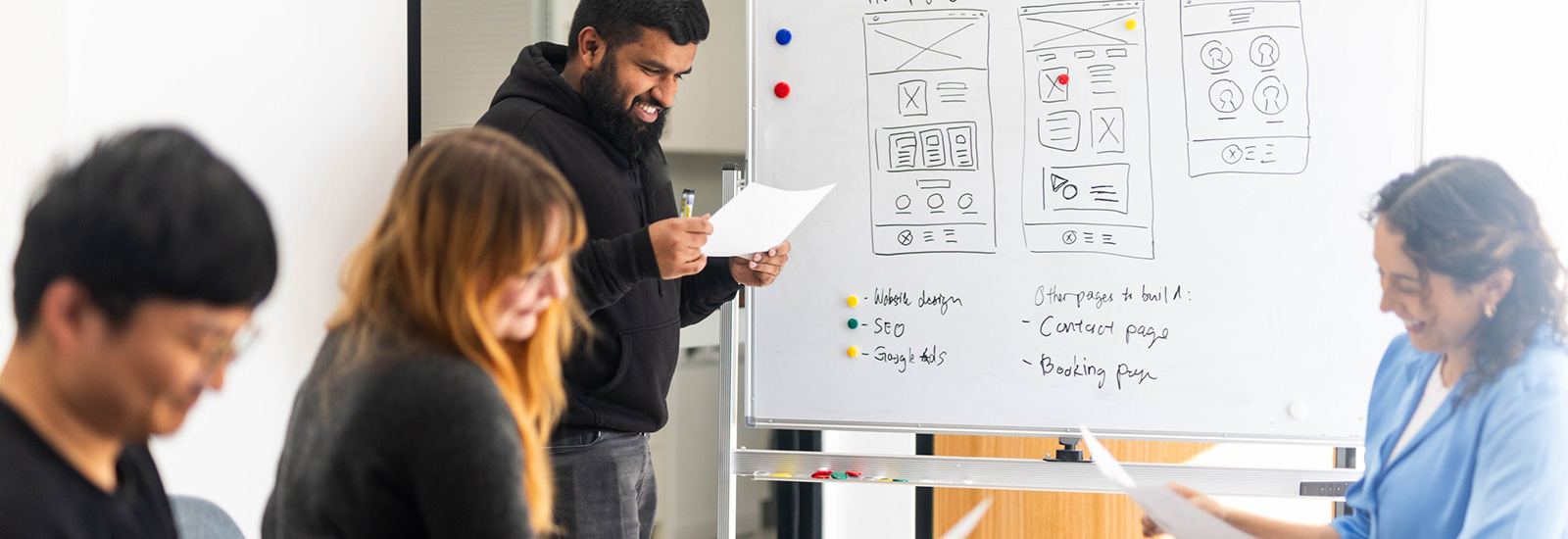How to Maintain your SEO Rankings after a Website Redesign

You will need to consider how to maintain SEO rankings and domain authority before, after and during the process if you are working on a website redesign.
The site’s aesthetics are not the only thing you need to worry about when creating a new website design. You need to take time during this period not only to preserve the SEO, but also to look for ways to boost it.
Many companies often make the tragic mistake of thinking of redesigning a website will have no impact on SEO, but it does. If not done carefully, all of the past SEO attempts could be washed out.
With major web design and development activities, both technical and non-technical areas need to be considered.
You must take specific steps to ensure that when you move from your old site to the new site, you do not damage your SEO quality. You will learn about SEO redesigning best practices in this post and how to make sure you don’t lose the value of SEO.
SEO Site Overhaul–Core Areas to Remember While redesigning the page
There are three main areas to remember when preserving your SEO rankings while a redesign of your website:
- What fits with your current SEO strategies
- Certain problems that may emerge during an overhaul
- Improvements that come with the new site
By working on these three things, you will be able to discern the SEO vulnerabilities so that you can strengthen these areas. You should also work to improve them in addition to just retaining the ratings.
Challenges with SEO when redesigning a website
While working on a website redesign, there are many problems that may emerge while you concentrate on rebranding, optimizing user experience, and upgrading the backend. This is a list of areas that may be challenging:
- Content that is deleted
- Content that evolves
- Content may shift depending on the functionality of the new site or site map
- URLs may alter
- page-level optimization changes
- Include new content, new pages, new technology, and new features
- New technical problems
- External connection layout updates
- domain or subdomain changes
- Server change
All of these areas that impact it may be difficult to identify just what needs to be tackled with so many potential obstacles. A business change would be one of the biggest challenges. The other aspects are also significant, and the more improvements you have, the more difficult it will be to retain SEO.
Steps to redesign your website and not loose on your SEO ranking
It is critical to understand the best practices that will enable you to preserve your SEO rankings before you start your redesign. Before you start, consider these parameters of redesign:
- Run an SEO audit on your current site: – You can start by performing your site’s SEO review, learning all the keywords you’re trying to rank with, and what pages are affiliated with. In addition to redirects, you should also think about sites and basic on-page modifications that go from dev. to the live site. This is particularly helpful if your website has a lot of interactive content.
The importance of history web crawls
It’s a good idea to save crawl information from the old site. You can use a tool such as Screaming Frog to load and analyze the old site crawl.
- Optimizations On-page: – You can export all the key elements on-page, including Meta names, Meta descriptions, alt tags, and headers, by browsing the old site. Also, if it works well, try not to change things too much if the products or services of your business have not changed significantly. You should also think about sites and precise on-page configuration from web to live site. This is particularly helpful if your website has a lot of interactive content.
Setting Up 301 and 302 redirects
First and foremost, you need to move old URLs to new ones. When you make any major changes to the structure of the permalink, you will need to have a list of all the redirects you need. Once you’ve got the new page up, check the old list of URLs and make sure it all redirects as it should.
When to use 301 redirects
A 301 redirect is a constant path from one URL to the next. Such redirection takes place with visitors to the website and search engines. In many situations, a 301 redirect may be safer than a temporary one for SEO because it also moves the inbound links, around 90 to 99 percent of the reference equity. In most instances, this is the preferred method on your new site to introduce redirects.
Setting up 302 Redirects
A 302 redirect is temporary, redirecting users and search engines for a short period of time to the desired page until it is removed. Because it is temporary means that during a web page update you should use it so that users have a seamless experience. In fact, a lot of 302 redirects will hurt your SEO so be careful when you use them.
How to maintain Page structure during a website redesign
Site structure has a lot to do with the ratings of your SEO. This is because it provides a good user experience because with less effort they will find things they are searching for. The more attractive your site is for users, the more attractive it is for search engines. If your page has weak click-through rates and low dwelling time, it will be negatively rated by search engines.
Stick with the same layout when you add a section. You might have website.com/solutions/solution1 for example. Leave it under the parent site solutions if you add another solution.
Remember to update the XML Sitemap
Update and upload your sitemap to search engines. Your 301, website layout, routing, and XML sitemap should all be compatible and the new site structure should be shown.
Review and update your website’s Backlinks
Backlinks are the key to your SEO position development. Check all the backlinks that lead to your blog, and if you notice that they point to pages that you deleted or altered, then try to contact these sites and correct the backlinks. If this is not possible due to the volume, you can also create redirects.
Internal link structure
Be very aware of the changes you bring to the design of the inner link structures. Crawl information can also be useful here. You will have broken links in your site if you make changes to a lot of URLs, so you need to do an audit. There are plug-ins available that can help make this easier, as you don’t want to uninstall any of these because it could have a negative impact.
Producing high quality SEO content
If you have good performance of content on pages, then leave it as it is. Minimize modifications to the quality of high rankings. It is also a very important step to consider when redesigning your website to retain photo and video SEO. Make sure to keep all the documentation and file names as they are when you move these resources to the new site.
How to avoid these SEO redesign mistakes
Now that we’ve covered all you should do, here’s a warning to avoid errors that might cost you your SEO rankings.
- Don’t continue with content from scratch: don’t give it up if you have content that’s ranked. Not moving content to the new site could cost you in the rankings.
- Do not forget redirects: if visitors receive “page not found” errors, this means that pages are dropped off the index of Google.
- Don’t forget to connect internally; it’s a mistake not to move this to the new site.
- Do not forget to update links outbound as necessary.
- Pages with high rankings and multiple backlinks should not be overlooked. To find these, you can use Ahrefs to store or move them.
Redesigning a website is a step to be taken by most businesses as a brand grows. To maintain SEO rankings from a website redesign, you should follow these best practices. You don’t want to start over as if your website was never there. Implement a detailed guide in order to leave nothing out.
If you have any queries you can speak us for more details to handle site redesign.




